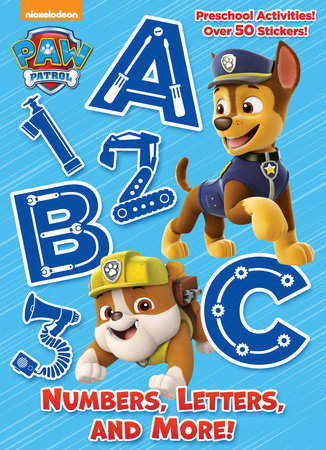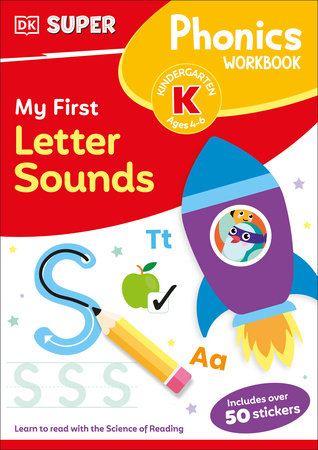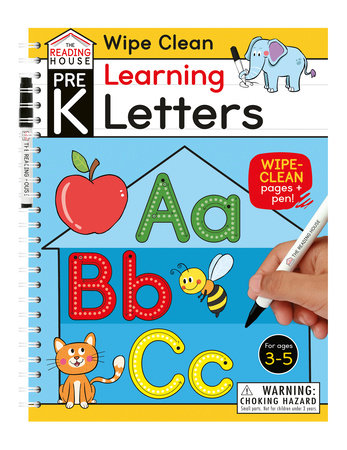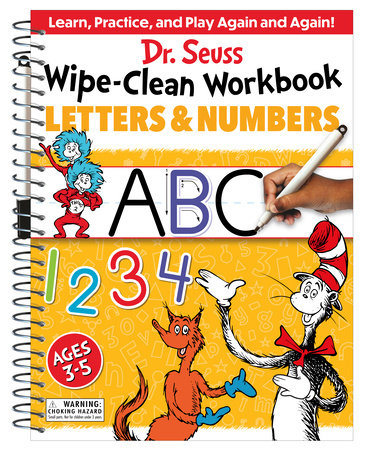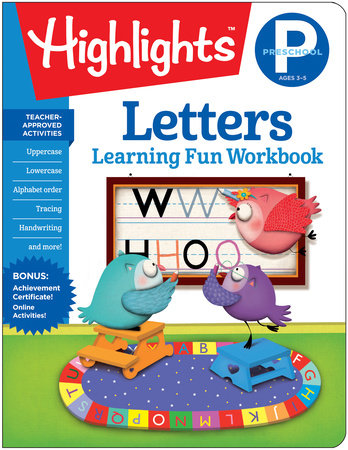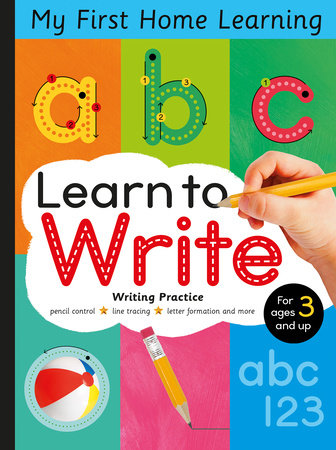The Best Workbooks To Help Preschoolers Learn Their Letters
by Miranda Rosbach
As our children’s first teachers, parents and caregivers provide them with many learning opportunities — most of which come during the first five years of a child’s life. Taking cues from your little one about their readiness for diving into a new skill set is helpful, especially if they’re resistant or have learning delays. Most children, however, are ready to learn letters and numbers somewhere between ages 3–5. Many parents and educators begin by teaching children the letters of their own name and expand from there. These workbooks all feature daily activities to help your child become proficient at learning sounds, letters, and writing skills. Each guide fosters one-on-one interaction between the adult teacher and child learner. If you aim for 10–20 minutes a day, that is plenty of time to see progress with your preschooler.
-

Numbers, Letters, and More! (PAW Patrol)
This introductory primer is an excellent resource for kids that love PAW Patrol. It starts with numbers 1–10 and provides tracing activities for each number. The alphabet writing portion provides examples and tracing opportunities for uppercase and lowercase letters. The workbook also contains counting and fill-in-the-blank letter activities. Plus, the centerfold of PAW Patrol stickers is a great incentive for helping little ones feel excited about their daily progress.
Preorder from: -
Write-On Wipe-Off Let's Write Letters
Available from:Open this spiral-bound workbook to find a template for practicing writing letters (uppercase and lowercase). Dive into a seek-and-find warm-up activity, practice writing with hidden picture puzzles, and trace letters and words. The sturdy design and wipe-clean marker make this a terrific on-the-go learning tool.
Also available from: -
DK Super Phonics My First Letter Sounds
Available from:This 200 page workbook is jam-packed with fun and educational activities and games for teaching letters and letter sounds. A journey map on the first page comes with stickers to help kids see their learning progress. Some pages include tips for caregivers on how to guide a child through the book. It’s a fun and straightforward approach for 4- and 5-year-olds just starting to learn to read and write.
Also available from: -
Learning Letters (Pre-K Wipe Clean Workbook)
Available from:This spiral-bound activity book comes with a dry erase marker and can be wiped clean and reused for maximum practice. Quizzes, fill-in-the-blank activities, and matching games at the back of the book made it a hit with my four-year-old. A quick note to adults sets the stage for ensuring proper pen control and common stroke patterns. Each letter gets an entire page to itself, with both uppercase and lowercase letters represented. Note: this workbook does not include numbers.
Also available from: -
Dr. Seuss Wipe-Clean Workbook: Letters and Numbers
Available from:This fun and engaging workbook is filled with Dr. Seuss’s beloved characters and plenty of exercises that let kids practice their letters and numbers. Throughout these pages, kids will find activities on letter sounds, counting, writing, tracing, and more! With the wipe-clean format, little learners can practice again and again on the reusable pages, gaining confidence with each new try.
Also available from: -
Preschool Letters
Available from:Jump into tracing with both uppercase and lowercase letters featured on one page. After completing all 26 letters, children can practice tracing the entire alphabet altogether. Finally, they’ll move on to a matching and connect-the-dots game. This slim, no-frills volume is concise and should take less than 5 minutes a day.
Also available from: -
My First Wipe-Clean ABC 123
Available from:This fun wipe-off ABC book is similar to what I used for my first daughter four years ago. It provides letter writing practice (uppercase and lowercase), number formation, tracing, counting, and more. Work on your child’s letter recognition and fine motor skills, then wipe off the pages and start again. A definite win for parents and kids alike.
Also available from: -
Learn to Write
Available from:Help your child build confidence in their writing skills with the Learn to Write workbook! With activities for everything from pencil control and line tracing, to letter formation and even freehand writing, these exercises provide a wonderful foundation for learning, help improve fine motor skills, and set kids up for success!
Also available from:
You might also like:
- Best Learning Workbooks for Pre-K and Elementary Students
- Great Supplementary Math Workbooks for Kids
- Fun Pre-Writing Activities for Preschoolers
- How to Use Decodable Books to Support Readers at Home
Editor’s Note: This article was originally published in 2022 and updated in 2025.

